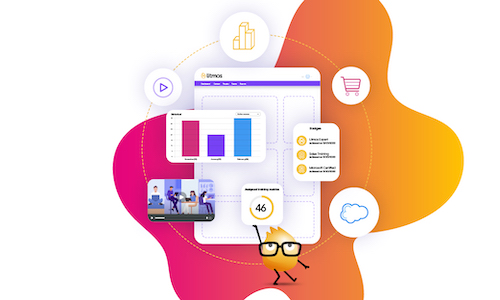Looking for Gaps in Your Revenue Enablement Strategy? Start with CX and Customer Training
Generating revenue: it’s the job of your sales team, right?
Not exactly. While your sales teams’ job is to make sales and close deals with new customers, several teams work together to generate revenue. Marketing creates the assets that generate warm leads for sales. The sales team gets conversations going and addresses the pain points of potential customers to close the deal. Your customer experience (CX) team ensures that new and existing customers get the most out of your product and build customer relationships that keep clients coming back for more via subscription renewals, upselling, or cross-selling.
Because all of these functions are involved in generating revenue, the members of marketing, sales, and CX teams need to better understand the sales process. They also need enablement and support that empowers them to do their jobs more effectively.
Unfortunately, CX, customer service, and marketing are often overlooked when it comes to revenue enablement. This is a critical oversight because they’re all in a position to bring in more revenue. This article will explain why the CX team in particular could be your secret weapon for selling and revenue retention; and why they need proper support to be effective members of your revenue team.
Making your CX team your secret sales weapon
Your CX team is your customer’s point of contact with your brand after the sales process. It’s the CX team’s job to advocate for the customer, and to manage customer expectations regarding the product. CX reps handle pain points and learn about each customer’s unique use case and needs.
In doing this, your CX team builds a relationship with customers, and builds trust. And as trusted advisors to your customers, your CX team is uniquely positioned to recommend products or upgrades that can address the specific needs of your customers.
However, like the sales team, the CX team needs support and training that helps them build customer relationships and successfully facilitate sales.
What is revenue enablement?
You’ve heard of sales enablement (giving your sales team the tools to better do their jobs).
Revenue enablement is similar but has a wider scope; it is a strategy that empowers your whole organization to maximize revenue through every stage of the customer journey. In other words, revenue enablement is an umbrella term that covers sales enablement, but extends to CX, support, marketing, and any other function within an organization that deals directly with customers. The goal is to create a seamless, personalized customer experience that engages and delights your customers.
Revenue enablement includes a range of learning, content, technology, tools, data, analytics, and processes to make it easier for your team to increase revenue throughout the customer lifecycle. It also includes customer training.
Finding gaps in revenue enablement
When you’re evaluating your revenue enablement training, it’s important to identify the areas of improvement that your training, tools, and resources will address. To find these gaps, it helps to have a strong idea of what your enablement strategy looks like right now.
- Define your goals: Know what you want to achieve. Are you focusing on increasing sales efficiency, increasing revenue, enhancing customer engagement, or all of these? Misalignment between goals and strategy can indicate a gap.
- Assess your current performance: Analyze your current revenue metrics. Look at sales conversion rates, average deal size, customer churn, and other key performance indicators (KPIs) that your revenue leadership prioritizes. How close are you to achieving your goals?
- Map the customer journey: From initial contact to the end of the relationship, what departments are customers in touch with? Those teams likely need support and should be folded into your revenue enablement strategy.
- Audit your content: Review the content and resources available to teams that are touchpoints in the customer lifecycle. Do they help your teams address customer needs throughout that lifecycle? Seek feedback from customer-facing employees who have used your training or enablement materials in the past to see if and how enablement has helped them interface with customers. Identify any missing or outdated materials and work to update them with your goals and the customer journey in mind.
- Training and development needs: Review the training and development programs you have now. How can they be modified to fit the needs of CX and other teams? Assess whether the training curriculum covers essential selling skills, product knowledge, competitive positioning, and sales process proficiency. Identify areas where additional training or coaching is required.
Revenue is everybody’s job
The quality of your brand’s customer experience is closely tied to revenue. In fact, almost half of CX leaders use revenue to measure the success of their customer experience strategy, according to a current CX industry report.
It’s a natural correlation — customers vote with their wallets when they don’t feel customer experience is up to par. According to the same report, 65% of customer experience professionals feel that unsatisfied customers are more likely to switch brands now than in the past. In fact, customer expectations have been on the rise in general. They expect personalized service provided seamlessly throughout their relationship with your brand.
Leveraging learning as a strategic tool is crucial for organizations aiming to boost sales and secure long-term loyalty. Brandon Hall Group’s eBook, “Leveraging Learning to Drive Revenue,” offers valuable insights and tactics for L&D to become the competitive advantage your business needs. Don’t miss out on this opportunity to drive brand awareness, generate substantial revenue, and lock in loyalty. Explore the eBook now and take your training and enablement to the next level!




